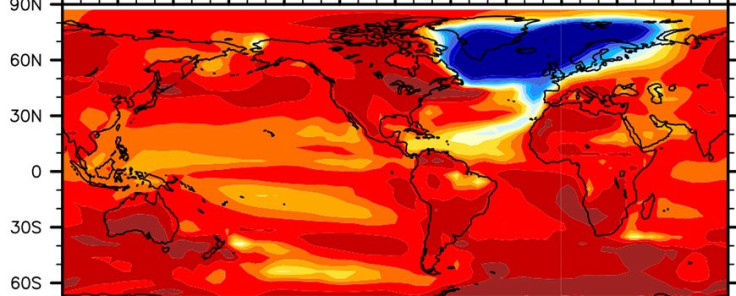Climate Change Impact: North Atlantic Circulation Patterns Could Be A Lot Less Stable Than Assumed

In what seems to be a leaf out of a fiction movie, one that’s already been made 12 years ago, climate scientists have issued a warning that could have severe ramifications for the world at large, and the Atlantic rim countries, especially those in Europe, specifically.
While it sounds very similar to the plot of the 2004 disaster film “The Day After Tomorrow,” the warning is not a piece of fiction. According to a paper published this week in the journal Science Advances said most climate models wrongly assume the relative stability of the Atlantic Meridional Overturning Circulation (AMOC). This circulation system carries warm surface water toward Greenland, which sinks as it cools and then flows back toward the equator closer to the seafloor.
“Observationally based freshwater budget analyses suggest that the AMOC is in an unstable regime susceptible for large changes in response to perturbations. By correcting the model biases, we show that the AMOC collapses 300 years after the atmospheric CO2 concentration is abruptly doubled from the 1990 level. Compared to an uncorrected model, the AMOC collapse brings about large, markedly different climate responses: a prominent cooling over the northern North Atlantic and neighboring areas, sea ice increases over the Greenland-Iceland-Norwegian seas and to the south of Greenland, and a significant southward rain-belt migration over the tropical Atlantic,” the study said.
Effects of the resultant cooling would include the spread of Arctic sea ice, and a drop in surface temperatures — as much as 4.3 degrees Fahrenheit over the North Atlantic Ocean and a far bigger 12.6 degrees Fahrenheit over northwest Europe. Tropical rain belts in the Atlantic would also move farther south.

Led by Wei Liu of Yale University, researchers from Yale and the Scripps Institute of Oceanography in the University of California, San Diego, removed the stability bias and re-ran climate model simulations to arrive at their conclusions.
“The significance of our study is to point out a systematic bias in current climate models that hinders a correct climate projection. A bias-corrected model puts the AMOC in a realistic stability regime and predicts a future AMOC collapse with prominent cooling over the northern North Atlantic and neighboring areas. Therefore, our study has enormous implications for regional and global climate change,” Wei said in a statement.
The study is titled “Overlooked possibility of a collapsed Atlantic Meridional Overturning Circulation in warming climate.”
© Copyright IBTimes 2024. All rights reserved.





















